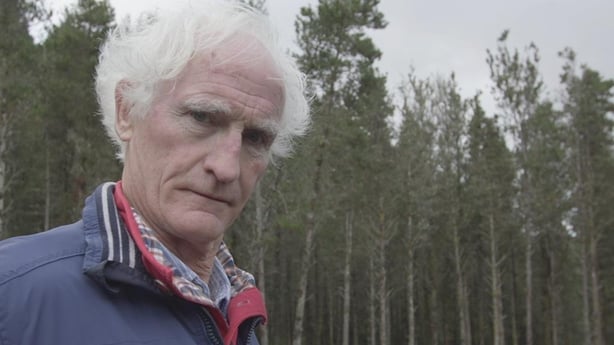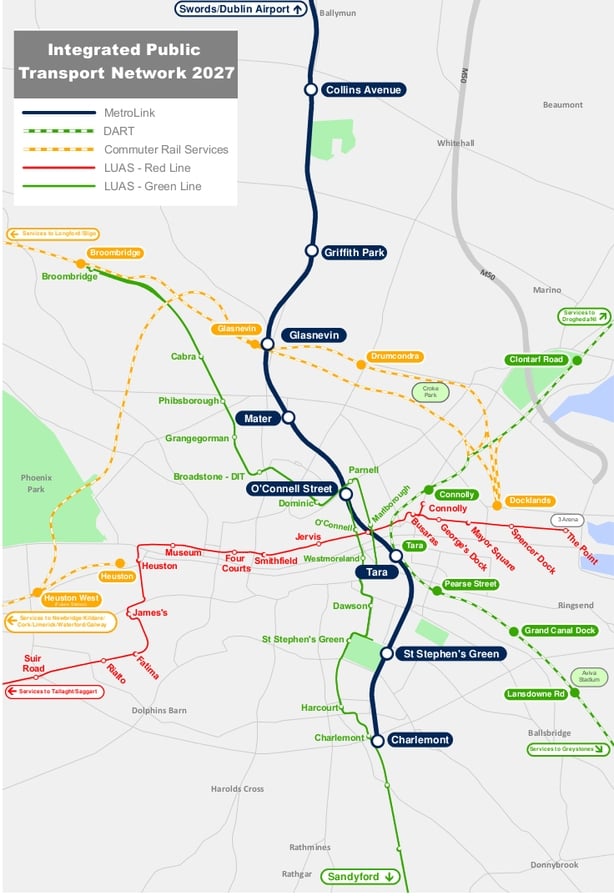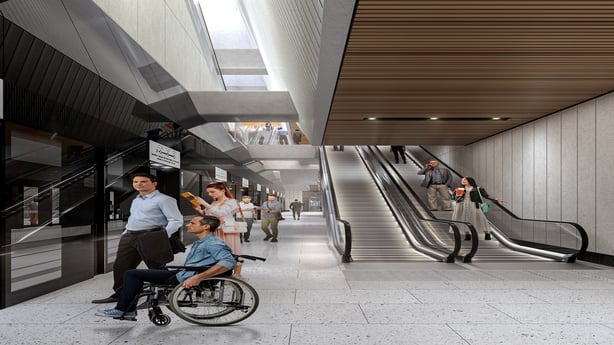Architect and environmentalist Duncan Stewart has said the proposed MetroLink project should be "withdrawn" and "redesigned" because of the carbon emissions that would be generated during construction.
In an oral submission to An Bord Pleanála, Mr Stewart told inspectors there were serious environmental impacts that needed to be considered regarding the overall benefits of the underground rail line.
"I personally think the project is seriously flawed, I'm sorry to have to say this, but I'm really seriously of that opinion," he said.
MetroLink should at "least comply" with Ireland’s commitments to reduce greenhouse gas emissions, Mr Stewart added.
He identified the tunnel as "one of the biggest problems" because of the embodied carbon emissions produced by materials on site and by the energy use in the construction phase.
Embodied carbon refers to the emissions during the construction of a building or piece of infrastructure rather than when it is in use, or the carbon footprint of a material.
"The sheer scale of the MetroLink tunnel will generate massive, embodied carbon emissions, from use of carbon intensive materials like steel and concrete, energy consumption to bore the tunnel, transportation of huge quantities of soil and rock," Mr Stewart said.

He pointed to an international study that compared different types of rail routes across the world, specifically tunnels to surface rail lines.
Mr Stewart said that underground rail tunnels generate carbon emissions that are 27 times higher when compared to surface rail line routes.
Clarifying that those facts needed to be checked, he said, if confirmed, "that’s a colossal amount of carbon emissions on that [MetroLink] route".
He added that he was "deeply concerned" about the "colossal" €9.5 billion budget allocated to build the system, describing the capital costs as "unprecedented and exorbitant" and criticised the "disproportionate" allocation of State funds.
"This exceptionally costly carbon intensive project" was flagged by Mr Stewart as being the most crucial issue to be examined by An Bord Pleanála because so much funds are being allocated for a "single standalone" project.

"This project is very likely to deprive Dublin citizens of the essential funds and resources required to expedite and transform Dublin to a well-connected, multi-modal public transport network that provides easy access across the city and to the main routes leading into the city from the Greater Dublin Area and Dublin's wider commuter belt," Mr Stewart said.
The design of the MetroLink was also criticised because its rail guage or line width of 1,400 mm, a "flaw" that Mr Stewart argued went against the 1,600 guage width adopted by DART, intercity and commuter trains in Ireland and Northern Ireland.
"This design factor will prevent all other trains travelling on this route, likewise it will prevent the MetroLink trains travelling on the routes to Cork and Belfast, Galway and Limerick.
"This clearly limits the effectiveness of the MetroLink, curtails its flexibility, and confines the MetroLink to a single underground route," Mr Stewart told inspectors.
"That’s why I refer to it as a standalone project, it's exclusive for one purpose, and that seems to be to get people to the [Dublin] Airport fast," he said, adding that the MetroLink’s "inflexibility in the long term" will inhibit the whole area of integrating and creating a network of public transport.
"This greatly reduces the potential mobility benefits for Dublin citizens, while inflicting unnecessary limitations on its potential for passenger numbers, which in turn diminishes potential for achieving reduction in carbon emissions , so there is a knock on effect here," Mr Stewart said.
'All environmental impacts considered'
Transport Infrastructure Ireland (TII) said the project has been subject to a strategic environmental assessment and all environmental impacts were considered.
TII said that alternatives were examined, including integrating light rail with a high quality bus network, with MetroLink identified as the preferred option.
Dr Avril Challoner, an air quality and climate consultant for Jacobs Engineers, said TII is very conscious of the carbon emergency, and the State body wants to ensure that it will be "gold star" in its commitments.
"The project is committed to savings above and beyond the Climate Action Plan," she said.
"100% of construction energy will come from renewables," Ms Challoner added.
She also said there is a commitment to remove diesel equipment from construction sites and move towards as much electric plant equipment as possible.
TII said it is only procuring products from suppliers that meet standards in embodied carbon and it is actively trying to encourage the wider industry to adopt these goals.

'Newton Transport Plan'
Earlier, the oral hearings heard from Tom Newton, an ''amateur planner with alternate remedies’’ to Metrolink, which he claims would reduce car numbers and fully integrate all modes of public transport nationwide.
"The Newton Transport Plan’" proposes a combined DART, rail and Luas route with trackless trams for the capital, which he said was the ‘’smart transport’’ choice.
Mr Newton’s expertise in public transportation in the capital dates back to 1966 when he was involved in consultations about developing bus lanes.
His three-pronged, alternative metro transport plan envisages a contraflow bus loop on Dublin’s quays, which he says would create a city interchange and maximises bus efficiency.
A ‘G-Link’ luas which would follow an orbital route linking the docklands via Baggot Street, St Stephen's Green and reconnecting with the red line Luas at Fatima.
Mr Newton said as a result all of Dublin city centre would be within walking distance of a rail or Luas line.
The final part of "The Newton Transport Plan" is the "Metro DART" - a new line linking the entire rail network nationwide, with a key stretch running between Donabate and Glasnevin, where trains from outside the capital, including Sligo, pass through.
Mr Newton said his "Metro Dart" would "revolutionise the whole rail network"’ meaning anyone with rail would be able to access Dublin airport directly.
In its submission, Dublin Cycling Campaign, raised issues around bike parking at MetroLink stations, claiming that there is no city centre station with more than 50% provision of spaces for cyclists.
"’It is important to provide a variety of high-quality publicly accessible cycle parking to suit the needs for various types of users," a spokesperson told An Bord Pleanála.
"This is important not just at suburban stations to expand the catchment area of the metro but also at key interchange and city centre stations to provide for last-mile connections in the busy city core.’’







